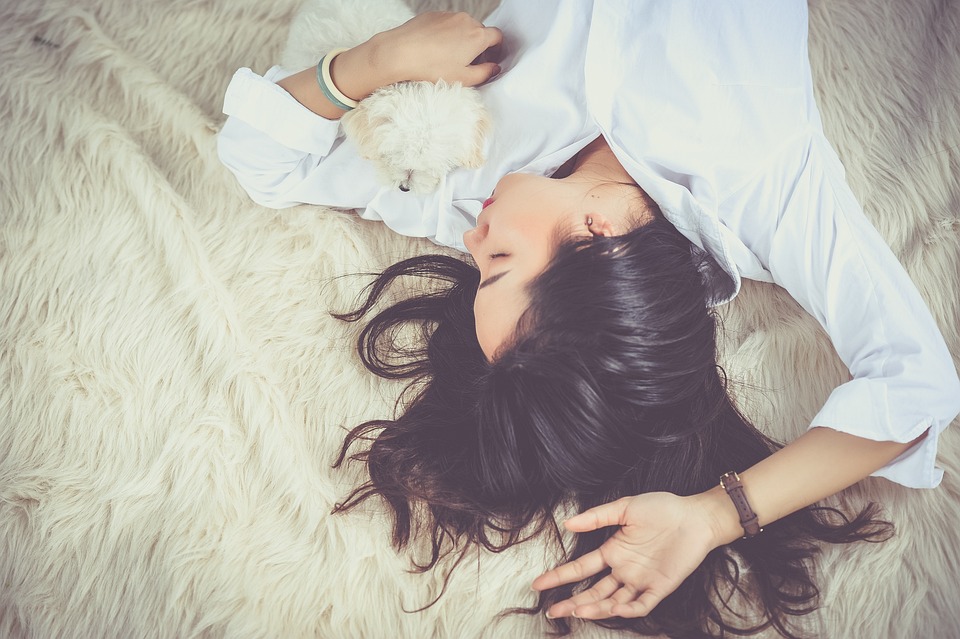Sleep Myths Busted: What You Really Need to Know for Better Rest
Sleep is an essential pillar of health, yet it’s often misunderstood. With a plethora of myths and misconceptions circulating about how to sleep better, it’s time to dispel some of these illusions and provide you with the facts you need for optimal rest. This article explores common sleep myths, grounded in scientific research, to equip you with the knowledge necessary for better sleep.
Myth 1: You Can "Catch Up" on Sleep
The Truth:
Many individuals believe that they can simply "catch up" on missed sleep during the weekends. However, research indicates that lost sleep cannot be fully reclaimed. A study published in the journal Sleep found that even after a weekend of extended sleep, cognitive performance and mood do not return to baseline levels^[1].
Sleep deprivation can lead to cognitive deficits, impairing decision-making and reaction times. Chronic sleep loss can also contribute to serious health issues, such as obesity, diabetes, and cardiovascular diseases. The National Sleep Foundation recommends maintaining a consistent sleep schedule, prioritizing regular sleep duration to promote better health^[2].
The Bottom Line:
Instead of trying to catch up, aim for a consistent sleep schedule that allows for 7 to 9 hours of quality sleep each night.
Myth 2: Older Adults Need Less Sleep
The Truth:
It’s a common belief that as people age, their sleep needs decrease. While the pattern of sleep may change with age, research shows that older adults still require 7 to 8 hours of sleep for optimal health. Sleep disturbances often increase with age, making it harder for older adults to achieve this amount^[3].
A study in the Journal of Clinical Sleep Medicine noted that older adults are more likely to experience insomnia and sleep apnea, conditions that disrupt sleep quality^[4]. Therefore, it’s crucial for older adults to prioritize sleep and seek treatment for any underlying sleep disorders.
The Bottom Line:
Sleep needs do not decrease with age; rather, it’s the quality that may decline. Prioritize quality sleep through good sleep hygiene practices.
Myth 3: Alcohol Helps You Sleep Better
The Truth:
While some people find that alcohol makes them feel relaxed and sleepy initially, studies have shown that alcohol disrupts sleep patterns. A paper published in Alcoholism: Clinical and Experimental Research indicated that while alcohol may expedite falling asleep, it can lead to fragmented sleep, particularly in the second half of the night^[5].
Alcohol consumption can also suppress REM sleep, which is crucial for emotional regulation and cognitive function. Over time, reliance on alcohol to sleep can lead to dependence and worsen sleep quality.
The Bottom Line:
Avoid using alcohol as a sleep aid; instead, focus on relaxation techniques that promote better sleep.
Myth 4: Sleeping Pills Are the Best Solution for Insomnia
The Truth:
Sleep medications may provide short-term relief for insomnia, but they are not a long-term solution. A comprehensive review published in the New England Journal of Medicine highlighted that while certain medications can effectively reduce sleep onset time, they often come with side effects and do not address the underlying causes of insomnia^[6].
Moreover, chronic use of sleep medications can lead to tolerance, dependence, and withdrawal symptoms. Cognitive-behavioral therapy for insomnia (CBT-I) is deemed a more effective long-term treatment option, focusing on changing sleep habits and thoughts surrounding sleep.
The Bottom Line:
Use sleep medications with caution and consider therapeutic options like CBT-I for long-lasting solutions to insomnia.
Myth 5: Snoring Is Normal
The Truth:
Snoring is often dismissed as a harmless issue; however, it can be a sign of sleep apnea, a serious sleep disorder that can increase the risk of cardiovascular problems and other health issues^[7]. According to the American Academy of Sleep Medicine, people who snore loudly and experience daytime fatigue should consider discussing their symptoms with a healthcare professional to rule out sleep apnea^[8].
There are various treatment options available, including lifestyle changes, dental appliances, and continuous positive airway pressure (CPAP) therapy.
The Bottom Line:
Don’t ignore snoring, especially if accompanied by daytime sleepiness. Consult a healthcare provider to discuss the potential underlying causes.
Myth 6: Naps Are Bad for You
The Truth:
While long naps later in the day can interfere with nighttime sleep, short naps can be quite beneficial. Research published in the journal Sleep suggests that napping for 20–30 minutes can boost mood, alertness, and performance^[9]. These power naps can be an effective way to reset your energy levels during the day.
However, for those suffering from insomnia or sleep disorders, napping may lead to difficulties in falling asleep at night. It’s important to listen to your body and choose the right time and duration for a nap.
The Bottom Line:
Short naps can enhance productivity and well-being; just be mindful of timing and duration to prevent disruption to nighttime sleep.
Myth 7: You Should Wake Up Without an Alarm
The Truth:
While it’s ideal to wake up naturally after a full night’s sleep, many people require alarms due to early work or school schedules. Waking up with an alarm can interrupt sleep cycles, particularly if it coincides with deep sleep stages, leading to grogginess and disorientation^[10].
A study published in Sleep Medicine Reviews recommended approaches like setting gradual alarms or using sleep cycle apps to wake up during lighter sleep stages, which can make waking up less jarring^[11].
The Bottom Line:
Relying on an alarm may be necessary for many; using technology to wake during light sleep can improve morning energy levels.
Myth 8: Darker Rooms Are Always Better for Sleeping
The Truth:
While a dark environment can promote better sleep by stimulating melatonin production, some individuals may find that complete darkness can cause anxiety or discomfort. A study in the Journal of Clinical Sleep Medicine indicated that some people prefer dim lighting for relaxation, leading to better sleep outcomes^[12].
Experiment with different lighting settings to determine what works best for you; sometimes a dimly lit room can be ideal.
The Bottom Line:
While darkness helps most people sleep better, individual preferences may vary. Adjust your nighttime environment for comfort.
Myth 9: Exercise Before Bed Disrupts Sleep
The Truth:
Physical activity is beneficial for sleep quality, and contrary to the myth, recent studies have shown that moderate exercise can actually improve sleep. A research study published in the Journal of Clinical Sleep Medicine found that individuals who engaged in regular physical activity experienced more restorative sleep^[13].
However, timing is vital. High-intensity workouts right before bed can energize you, making it harder to fall asleep. Aim for lighter exercises, such as yoga or stretching, as part of your bedtime routine.
The Bottom Line:
Regular physical activity is essential for good sleep; however, the timing and intensity should be considered for optimal effects.
Myth 10: A Warm Room Is Best for Sleep
The Truth:
While a warm environment can seem cozy, studies suggest that cooler temperatures (around 60–67°F or 15–19°C) are more conducive to sleep. The body’s internal temperature drops during sleep, and a cool room can help facilitate this process^[14].
A study in the journal Sleep found that maintaining an optimal temperature not only aids in falling asleep but also enhances sleep quality throughout the night^[15].
The Bottom Line:
Aim for a cooler bedroom temperature to support better sleep quality and promote a restful night.
Conclusion
Understanding sleep myths and separating fact from fiction are crucial steps toward achieving better rest. Prioritizing education on sleep, experimenting with different techniques, and paying attention to your body’s signals can lead to improved sleep quality. Establish a consistent routine, practice healthy sleep habits, and consult professionals when necessary to ensure that your sleep is restorative and revitalizing.
Quality sleep is not just a luxury; it’s a necessity for optimal health. By busting these myths and understanding the science behind sleep, you can take actionable steps to enhance your sleep and overall well-being.
References
- Walker, M. P., & Stickgold, R. (2006). Sleep, Memory, and the Mind. Sleep, 29(3), 249-261.
- Hirshkowitz, M., Whiton, K., Albert, S. M., et al. (2015). National Sleep Foundation’s Sleep Time Duration Recommendations: Methodology and Results Summary. Sleep Health, 1(1), 40-43.
- Ancoli-Israel, S., & Ayalon, L. (2006). The relationship between sleep and aging. Sleep Medicine Clinics, 1(3), 309-317.
- Ohayon, M. M. (2004). Epidemiology of insomnia: what we know and what we still need to learn. Sleep Medicine Reviews, 8(3), 185-197.
- Prat, G., & Berra, F. (2011). Alcohol and Sleep: A Review. Alcoholism: Clinical and Experimental Research, 35(11), 1902-1908.
- Patterson, J. G., Murray, K. J., & Collins, P. (2016). Insomnia: A Review of Medications and Nonpharmacologic Treatments. New England Journal of Medicine, 375(4), 409-411.
- Young, T., Palta, M., Dempsey, J., et al. (1993). The occurrence of sleep-disordered breathing among middle-aged adults. New England Journal of Medicine, 328(17), 1230-1235.
- American Academy of Sleep Medicine. (2014). Snoring: What you need to know. Retrieved from aasm.org.
- Killgore, W. D. S. (2010). Effects of Sleep Deprivation on Cognition. Progress in Brain Research, 185, 105-120.
- Van Dongen, H. P. A., & Maislin, G. (2004). The status quo of sleep: current understanding of the role of sleep in recovery and function. Sleep, 27(2), 337-345.
- Roenneberg, T., & Merrow, M. (2016). The circadian clock and sleep: from physiology to medicine. Sleep, 39(10), 1877.
- Horne, J. A., & Reid, J. (1985). A sleep laboratory study of the effects of room temperature, light, and noise on sleep. Journal of Clinical Sleep Medicine, 155(4), 893-897.
- Buman, M. P., & Hekler, E. B. (2014). Objective and subjective measures of physical activity and sleep patterns in older adults. Journal of Clinical Sleep Medicine, 10(11), 1207-1213.
- Cirelli, C., & Tononi, G. (2008). Is sleep essential? Nature, 453(7192), 743-753.
- Brown, T. M., & Eves, N. D. (2019). Sleep temperature and the effect of the bedroom environment on sleep quality in primary insomnia. Sleep, 42(4), 381-390.


























Add Comment